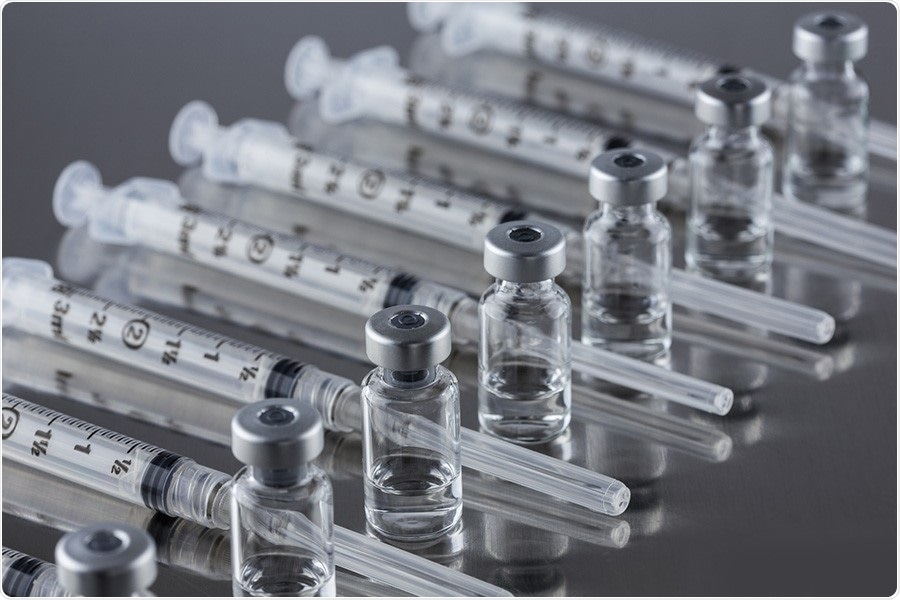The function of the body’s immune system is to defeat diseases by detecting foreign invaders, such as viruses or bacteria, and then mounting a response against these pathogens.

Researchers have discovered a general property for understanding how immune cell receptors sense and respond to microbial signals, which could lead to more effective vaccines for both existing and novel viruses. Image Credit: istockphoto.com.
But scientists are still clueless how the immune cell receptors function together to detect numerous molecules and make these decisions. A research team from the Pritzker School of Molecular Engineering (PME) at the University of Chicago has now identified a general trait for interpreting how these cells perceive and react to microbial signals.
The researchers studied the way molecules affect the immune cells and discovered that while the effect of one molecule does not estimate the effect of a couple of molecules together, the complexity ends there. As a matter of fact, scientists can use the effect of singles and pairs of molecules to predict the working of triplets of molecules.
The study, headed by Assistant Professor Nicolas Chevrier and published in the Cell Systems journal on October 27th, 2020, resulted in a more effective cancer immunotherapy in mice and may lead to the development of more effective vaccines for both prevailing and solve viruses.
Key to designing vaccines
Receptors found in the body’s innate immune cells detect molecules from foreign invaders. To combat viruses or bacteria, these cells make decisions in response to intricate combinations of inputs from those molecules. Although scientists have investigated singular pathways, they are yet to figure out how these pathways function together.
Chevrier and his colleagues set out to find out how cells combine numerous signals into a response. This would not only help resolve a basic underlying question of biology, but would also help develop vaccines that utilize adjuvants—molecules that help regulate the immune system and improve its response.
Although adjuvants are currently used by only a few vaccines, they may be crucial for designing new types of vaccines. At present, adjuvants approved by the FDA target just one or two of the cell’s receptors. If scientists could identify the correct combination to target more receptors, vaccines could turn out to be more effective.
Understanding how combinations work together
Along with his colleagues, Chevrier utilized adjuvants to activate immune cells in petri dishes. The team’s aim is to understand what exactly occurs when single molecule, two molecules, and triplets of molecules are utilized.
If the outcomes were additive, the impacts of one molecule and the impacts of other molecule would, when integrated, would continue to be the same. But scientists found that was not the case—a pair of molecules combined caused varied effects than the effect of a single molecule.
But the researchers did find that the impact of single molecules and two molecules could precisely estimate what happened in the case of triplets of molecules.
It could have been infinitely complex, but it’s not. We are the first to show you can predict higher-order effects across immune pathways with very simple models.”
Nicolas Chevrier, Assistant Professor, University of Chicago
Model used to design cancer immunotherapy
To demonstrate their theory, the team introduced cells that were conditioned with specific combinations of adjuvants—producing a particular cancer immunotherapy therapy—in a mouse model with tumors. There was a powerful response—the tumors grew 5 to 10 times less in treated mice against the untreated ones.
That was very encouraging. Now we need to better understand the mechanisms of why this worked so well.”
Nicolas Chevrier, Assistant Professor, University of Chicago
The team is also planning to look for novel combinations of adjuvants that have similarly strong effects and ultimately initiate a clinical trial in humans.
Now that we can predict the effects of multiple adjuvants with little data and a simple model, we need to extend this knowledge to the design of vaccines against both new and old threats.”
Nicolas Chevrier, Assistant Professor, University of Chicago
Source:
Journal reference:
Pandey, S., et al. (2020) Pairwise Stimulations of Pathogen-Sensing Pathways Predict Immune Responses to Multi-adjuvant Combinations. Cell Systems. doi.org/10.1016/j.cels.2020.10.001.